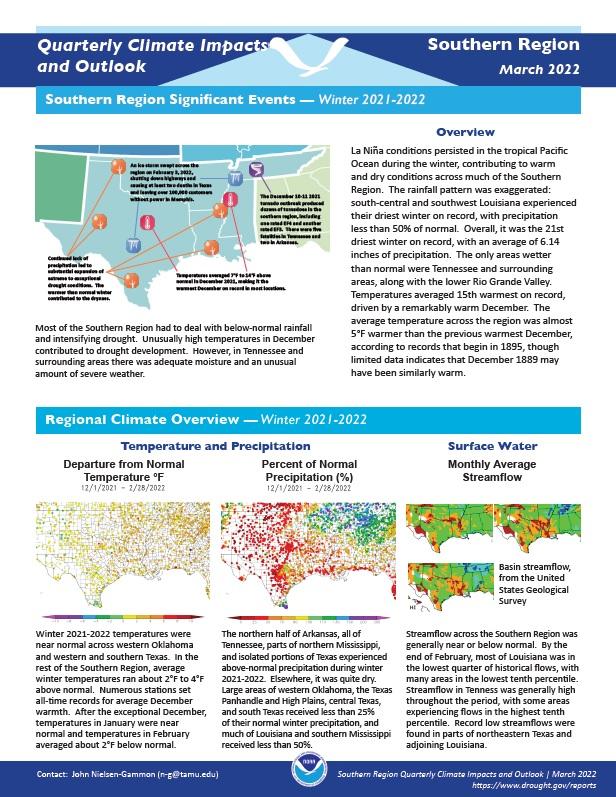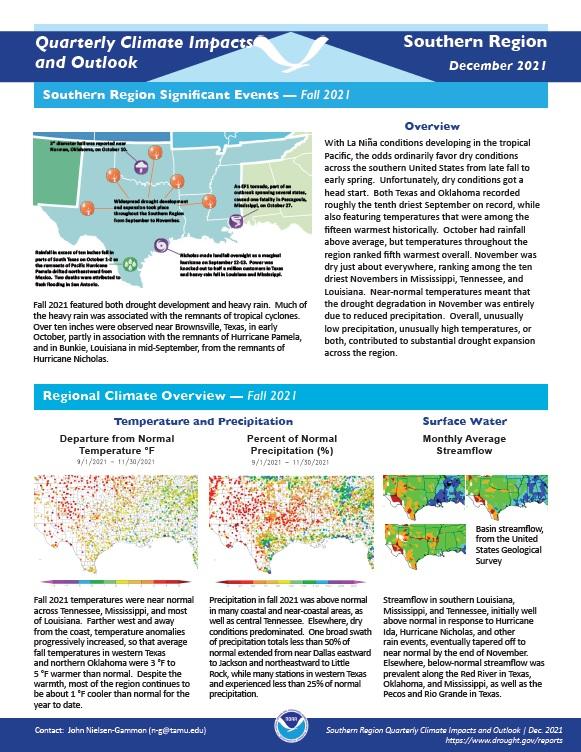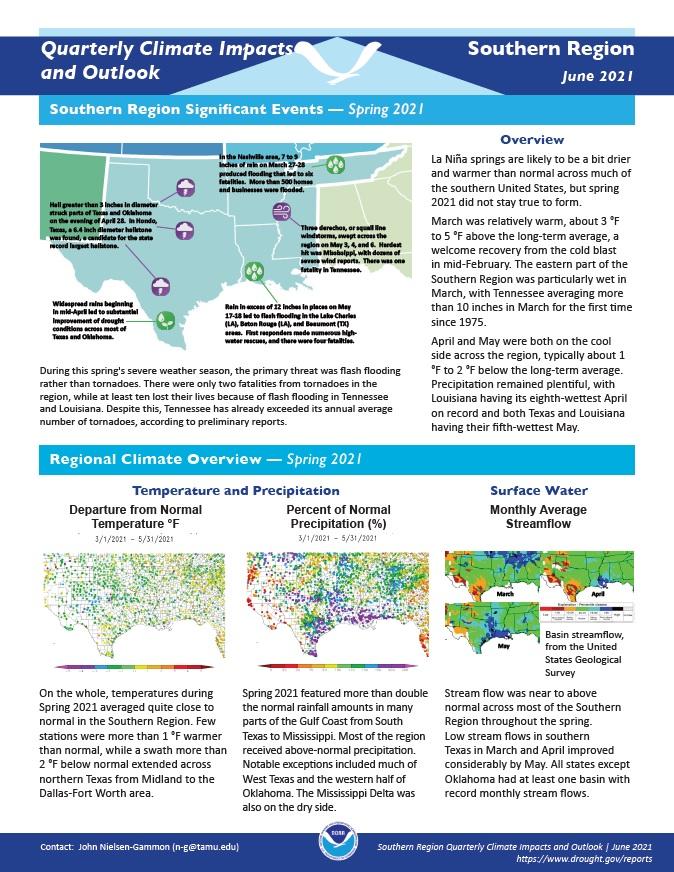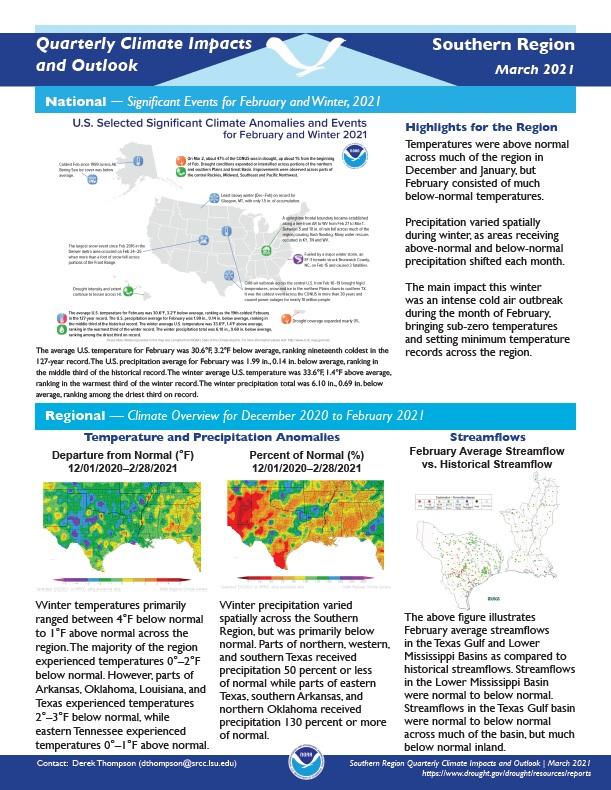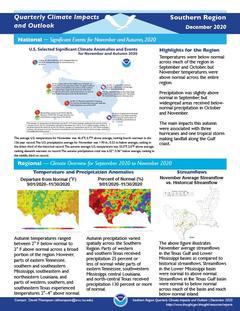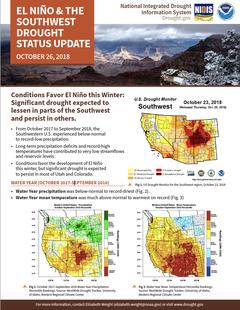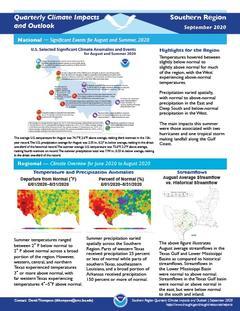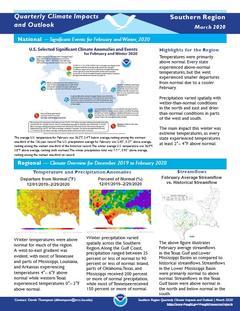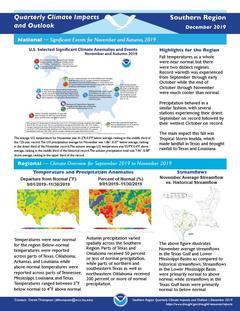Quarterly Climate Impacts and Outlook for the Southern Region for December 2021–February 2022. Dated March 2022.
Winter 2021–2022 temperatures were near normal across western Oklahoma and western and southern Texas. In the rest of the Southern Region, average winter temperatures ran about 2°F to 4°F above normal. The northern half of Arkansas, all of Tennessee, parts of northern Mississippi, and isolated portions of Texas experienced above-normal precipitation during winter 2021–2022. Elsewhere, it was quite dry.
Quarterly Climate Impacts and Outlook for the Southern Region for September - November 2021. Dated December 2021.
Fall temperatures were near normal across Tennessee, Mississippi, and most of Louisiana. Farther west and away from the coast, temperature anomalies progressively increased. Precipitation was above normal in many coastal and near-coastal areas, as well as central Tennessee. Elsewhere, dry conditions predominated.
Quarterly Climate Impacts and Outlook for the Southern Region for June - August 2021. Dated September 2021.
At most stations outside of Texas, summertime average temperatures were within 1 °F of normal. Most of Texas was 0-2 °F cooler than normal. Summer 2021 was exceptionally wet across most of South Texas, parts of West Texas, and almost all of Mississippi, with many stations reporting more than double the normal monthly precipitation amounts.
Quarterly Climate Impacts and Outlook for the Southern Region for March - May 2021. Dated June 2021.
On the whole, temperatures during Spring 2021 averaged quite close to normal in the Southern Region. Spring 2021 featured more than double the normal rainfall amounts in many parts of the Gulf Coast from South Texas to Mississippi. Most of the region received above-normal precipitation.
Quarterly Climate Impacts and Outlook for the Southern Region for December 2020 – February 2021. Dated March 2021.
Winter temperatures primarily ranged between 4°F below normal to 1°F above normal across the region. Winter precipitation varied spatially across the Southern Region, but was primarily below normal.
Quarterly Climate Impacts and Outlook for the Southern Region for September – November 2020. Dated December 2020.
Temperatures were below normal across much of the region in September and October, but November temperatures were above normal across the entire region. Precipitation was slightly above normal in September, but widespread areas received below normal precipitation in October and November.
Conditions Favor El Niño this Winter: Significant drought expected to lessen in parts of the Southwest and persist in others.
From October 2017 to September 2018, the Southwestern U.S. experienced below-normal to record-low precipitation.
Long-term precipitation deficits and record-high temperatures have contributed to very low streamflows and reservoir levels.
Conditions favor the development of El Niño this winter, but significant drought is expected to persist in most of Utah and Colorado.
WATER YEAR (OCTOBER 2017-SEPTEMBER 2018)
Quarterly Climate Impacts and Outlook for the Southern Region for June – August 2020. Dated September 2020.
Temperatures hovered between slightly below normal to slightly above normal for much of the region, with the West experiencing above-normal temperatures. Precipitation varied spatially, with normal to above-normal precipitation in the East and Deep South and below-normal precipitation in the West.
Quarterly Climate Impacts and Outlook for the Southern Region for December 2019 – February 2020. Dated March 2020.
Winter temperatures were above normal for much of the region with the west experiencing smaller departures from normal due to a cooler February. Winter precipitation varied spatially across the region with wetter than normal conditions in the north and east and drier than normal conditions in parts of the west and south.
Quarterly Climate Impacts and Outlook for the Southern Region for September – November 2019. Dated December 2019.
Fall temperatures as a whole were near normal, but there were two distinct regimes. Record warmth was experienced from September through early October while the end of October through November were much cooler than normal. Precipitation behaved in a similar fashion, with several stations experiencing their driest September on record followed by their wettest October on record.


